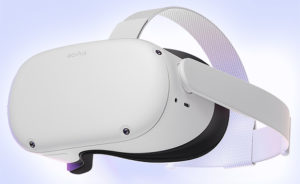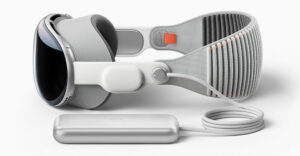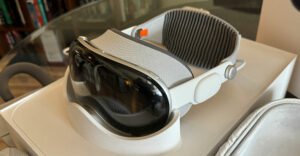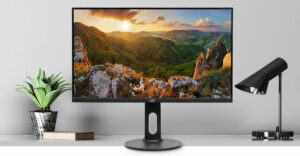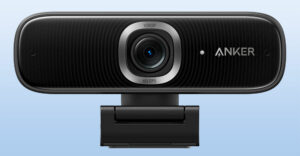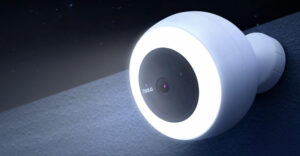Those of us who grew up with Star Trek might remember a device from the series called a replicator. This was a 3D printer of sorts that could create almost anything, ranging from food to weapons, at the touch of a button.
We are going in that direction, but it will be decades — and most likely the second half of this century — before deploying a product like a replicator affordably.
However, we do have many of the components, like AI, that can translate your voice into a command, bring together the necessary information to define the product you want, and if there were a 3D printer that could print anything, print it.
It’s the “print it” part that is holding us up. But even so, a recent announcement by HP and Albea Packaging indicates we are moving to scale customized products near term, creating yet another significant step toward our replicator future.
Let’s talk about our progression to the home-based replicator that could take us to that Star Trek future, and we’ll close with my product of the week, a nice affordable set of wired earbuds from Strauss & Wagner that provide decent sound, are hard to lose, and cost less than $40.
3D Printing Today
At an industrial level, HP essentially stands alone with printers that can produce at scale with metals or plastics. Its products can produce complex shapes, but can’t yet blend materials or embed electronics and don’t work with food.
HP’s Multi Jet Fusion printer is impressively fast. Still, it isn’t at all suitable for the home. You need to gain access to it through one of the firms that provide this service today; much like we once needed to before there were personal printers: go to a shop to have done what we needed to be printed.
There are personal 3D printers in the market, but most still produce products that are nice to look at but wouldn’t function as well as a part that was produced in a more typical manufacturing plant.
This limitation doesn’t mean that people aren’t finding ways to make some impressive projects with 3D printers.
For example, on Etsy there are a substantial number of props and other items that are now 3D printed, painted, and then distributed to clients. I recently ordered a replica of the Rocketeer Helmet and Jetpack. Both offerings are as incredible looking as they are non-functional.
On food, Upprinting Food and Natural Machines are working on 3D food printers to dramatically reduce waste and improve our diets while making fun and creative food products.
Sadly, we are still a long way from just asking for a pizza or burger to be printed, but these two firms are exploring ways to use leftovers to create culinary delights automatically safely.
Much of the existing 3D printing at scale appears to be in the automotive market, and we’ve already had several 3D printed cars. However, we mainly talk about body and frame efforts; not engines, suspension, or complex systems.
Still, the latest 3D printed cars engage with the Divergent 3D blade car, which I saw in person and is one of my personal favorites. It’s a single-person vehicle, with massive 720 horsepower that is incredibly light at only 1,300 pounds, and is based on custom-printed parts and carbon-fiber tubes. For perspective, my small Jaguar sports car weighs around three times that and has 220 less horsepower.
Check out Jay Leno’s coverage of that car:
Using a metal 3D printer and several aerospace scientists, they have created a platform that could print a custom car by the end of the decade.
Another area that is advancing is 3D printed homes that can be printed in a fraction of the time it takes to build a traditional home and resist climate change and natural disasters. These homes can be beautiful, relatively inexpensive to manufacture, cheap to maintain, and far sturdier than traditional home builds.
China is particularly aggressive with this technology given its housing needs. This video showcases some of the more exciting hardware currently in use:
With these home printers, two operators can do the work of a building team in a fraction of the time completing a home in about a week. Some of the European efforts are works of art.
One of the sad things I live with is how many people have lost their homes to the West Coast fires plaguing the country. Many didn’t have fire insurance, and a surprising number that did are rebuilding using wood again because it is cheaper.
The idea of a home that could cost up to 50 percent less for the same sized structure that is resistant to fires should be far more palatable to most of these folks as they move to rebuild their lives.
Finally, threeASFOUR is 3D printing clothing, and it looks pretty damned good with out-of-this-world designs, material longevity, and a relatively fast turnaround for what is a unique custom dress.
Wrapping Up: Customization at Scale
The HP announcement I started with is focused on customization at scale, the concept of allowing a customer to design what they want the vendor to build instead of buying off the shelf.
Imagine being able to design your car or home on the computer, and then sending the design to a firm that either creates the result remotely and delivers it (car, appliance, etc.) or builds it at your location (house).
For food, point dietary needs could be defined with a tool similar to what they use to measure blood sugar. Then the ingredients that would best improve performance and happiness would be blended into the result for a snack that would be uniquely designed to be specifically suitable for you.
Much of what I showcased is in prototype form (3D printed cars) or early deployment (3D printed homes and parts). Still, within the decade, most of us should get the opportunity to design what we use or have an AI design it for us based on our likes, interests, and unique usage model.
Imagine putting on a set of VR goggles, having the AI walk you through what it thinks you want, working with the AI to refine that initial design, and then, within hours (or a few days for a house) receiving a product that was custom designed for you, and partially by you.
It will be a fantastic future.

Strauss & Wagner EM205 Earphones
I’m not a fan of wireless earbuds because good ones cost well over $100; they fall out of my ears and are easily lost on a hike, bike ride, or pretty much any outdoor activity (horseback riding in particular), and that significantly hampers my enjoyment.
Headphones don’t work when you are out doing stuff, and tethered wireless earbuds, which are my go-to when I’m out doing activities, can cost upwards of $200.
Granted, for a lot of you who have phones that don’t have a phone jack, Bluetooth may be your only real option. But for those of us on a budget, that want decent sound and don’t want to risk losing the solution, wired earbuds are likely the better path. However, those often sound tinny and cheap, look like crap, and still cost more than $20.
I’ve been using the Strauss & Wagner EM205 wired earbuds for about a week. I’m impressed with the sound clarity, and with the included pouch they don’t take up much room in my pocket.
They come with three different sized earpieces (the smallest worked the best for me) and are comfortable to wear for hours. Other earbuds make my ears start to itch after about 30 minutes, but I haven’t had them itch yet with these things.

These earbuds are super light, which means I tend to forget I have them on if the music stops. They have no noise cancellation, but seal reasonably well to reduce ambient sound, and they have the typical controls and microphone on the cable so you can use them on a call and adjust the volume without having to take your phone out of your pocket.
The Strauss & Wagner EM205 earphones are light, sound good, and are easy to use, making them my product of the week.



